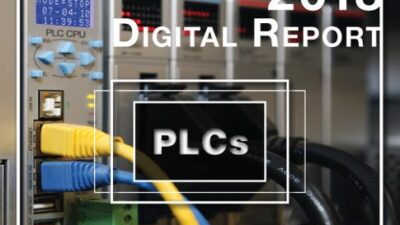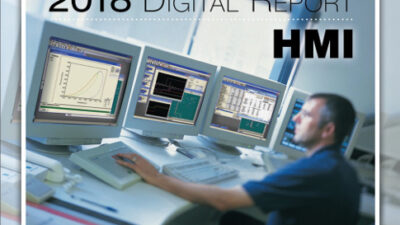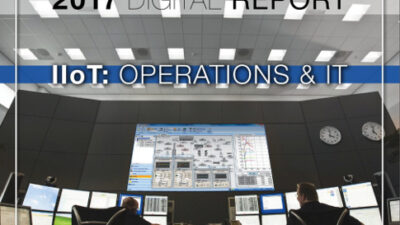Originally thought of as a way to share computer-aided design files affecting engineering and manufacturing, today PLM has transformed into the backbone of an enterprise-wide solution supporting ERP, CRM, and supply chain management systems.
Imagine a group of automotive executives sitting around a table and examining a new vehicle on-screen presented in its entirety as a totally accurate geometric 3-D virtual model. They are discussing the windshield. Using product life-cycle management (PLM) technology and simulation, they have uncovered an issue. There is going to be a problem inserting the windshield into place, which will either bump up the cost of the vehicle or require a revision of the design.
| Most studies still find that 80 percent of a product’s lifetime cost is determined during the design phase with 15 percent tied to sourcing and only 5 percent effected in purchasing and service. |
Implementation of PLM software allows for this kind of early intervention. Originally thought of as a way to share computer-aided design files affecting engineering and manufacturing, today PLM has transformed into the backbone of an enterprise-wide solution supporting ERP, CRM, and supply chain management systems.
However, the importance of design capabilities in PLM remains paramount as most studies still find that 80 percent of a product’s lifetime cost is determined during the design phase with 15 percent tied to sourcing and only 5 percent effected in purchasing and service. Deployment of PLM solutions enables collaboration within an enterprise, letting departments such as finance and purchasing participate in the product development process. Overcost problems can be identified in the design phase, long before the vehicle is anywhere near tooling development or production.
Planning the future rather than reflecting the past
A PLM enterprise backbone anchors all enterprise systems around a forward view of a company’s product and market strategy. Competitive corporations establish their market strategies based on their portfolio of products, and their manufacturing and sourcing strategies that support them. Using ERP or MRP systems as the enterprise backbone would be equivalent to driving out of your rear-view mirror, and would reflect an emphasis on yesterday’s strategies and product lines.
As markets recover, companies that position new and innovative products will lead over those that simply retrench and rationalize their previous products, manufacturing footprints, and supply chains. The ability of companies to emerge with advantage from this economic crisis will be a function of how the following competitive competencies are managed:
• Product portfolio and program management
• Direct materials sourcing and extended enterprise collaboration
• Eco-design / green products and regulatory compliance
• Integrated new product market launch
Today’s challenging economic times necessitate tighter data mastering and integration across these mission critical systems. Let’s look at these critical components to global success, and the PLM bases for them.
1. Product portfolio and program management processes need to be managed and configured based on strategic alignment, financials, revenue and market segmentation analyses, as well as:
• Customer needs and market requirements for each targeted market segment
• Product architectures, product lines and product derivatives / configurations
• Manufacturing strategies and tooling platforms
• Sourcing and standard parts strategies.
Here is product portfolio and program management reduced to its essential elements:
A. Analysis includes defining business and market needs, requirements and technical targets across product, manufacturing and sourcing functions. Executives assess risk versus opportunity for each initiative through financial analyses. Simulations are run on product and manufacturing models to validate the platform strategies.
B. Planning and control takes this analysis capability through a process to define the product / market strategy and the required product and manufacturing platforms and sourcing programs that define product portfolio. Strategy Review Board and Investment Review Board processes manage ongoing portfolio investments and decision making.
C. Product development and launch execution system uses the parts and supplier master data defined by this strategic portfolio to quote, design and solve project and launch issues and customer orders. A central data base contains the parts and supplier masters, but also the product and manufacturing portfolio data, as well as all the product and manufacturing simulation and test data used to define and execute the business strategies. Strategic management of the product portfolio is actively maintained by business line and product line executives.
How parts and assemblies for the products get requirements defined—and then get parts sourced, selected or designed and manufactured—determines the overall cost, timing and quality of any given product launch. In addition, acquisitions can be more effectively consolidated into ongoing operations and product-market strategies if the enterprise PLM backbone has been mapped across product development, manufacturing and sourcing systems.
Current economic business cycles require companies maintain a tight integration across their mission critical systems so that investments and projects can be appropriately prioritized and sized. A key enterprise capability for this is to have executive level dashboards that support management of the development pipeline to reprioritize or cancel projects in early phases, and to maintain ongoing oversight of strategic and mission critical programs. Executives need to be able to assess risk versus opportunity for each product initiative, on an ongoing basis. For companies with severe risk and exposure on large-scale projects (for example in aerospace and defense, or large infrastructure projects), visibility to program status against contract deliverables is often critical.
2. Direct materials sourcing and extended enterprise collaboration, integrated to the product development system, enhances a manufacturer’s leverage when negotiating new and existing contracts with suppliers. Sourcing, commodity and acquisition integration programs can be globally managed to the latest product attributes and designs. Spend can be more effectively aggregated to the preferred suppliers, optimizing volume pricing, reducing both parts proliferation and material and service costs.
By identifying sourced components based on part-reuse and product and manufacturing platform alignment, manufacturers can reduce inventory levels and respond with greater agility to shifts in demand. It streamlines the process of identifying alternate or functionally equivalent parts when standard parts are not available.
Best practice necessitates having a supplier qualification process integrated with the product development system. This lets product designers and managers select parts from approved and compliant vendors, as well as monitor manufacturing ramp process capabilities. This is especially the case when the majority of parts are externally sourced.
Negotiations with preferred suppliers go beyond obtaining best prices and favorable terms. When run on a PLM backbone, these otherwise standardized processes become avenues for harnessing supplier innovation, which allows manufacturers to address market needs quickly and efficiently. Suppliers become true partners by not just providing components and services, but by also proposing new technologies and solutions to meet market requirements.
Corporations not only have globally dispersed engineering, research and development centers, but equally dispersed partners, alliances and supply-chains. Maintaining a single system of record in a PLM architecture provides the means for a company to maintain visibility, flexibility and real-time 24/7 management of its global strategies and business development initiatives.
3. Eco-design / green products and regulatory compliance requires integration of the design and development systems with the extended enterprise to manage product impact across engineering, supply chains, manufacturing, distribution, after-market service and maintenance, as well as end-of-life processes (disposal, energy conversion and / or recycling).
Suppliers and engineering can be incorporated into the material compliance evaluation process to ensure the component library contains the most current material compositions and compliance certifications for supplied parts, such as RoHS (Restriction of the use of certain Hazardous Substances) and WEEE (Waste Electrical and Electronic Equipment) in electrical and electronic equipment, IMDS (International Material Data Systems) reporting and ELV (End-of-Life Vehicle) in automotive, and REACH (Registration, Evaluation, Authorisation and Restriction of Chemicals), across many discreet and process manufacturing industries.
In medical device markets, regulatory compliance also needs to be validated to U.S. Food and Drug Administration (FDA) requirements throughout the product introduction process. These regulations cover corrective and preventive actions (CAPAs), nonconformance reports (NCRs), product complaints, design control deliverables, design history Files, and Quality Audits. Enterprise-wide change control needs to be in place to manage modifications to all documents, specifications, procedures and product configurations—all this to minimize the risk of FDA audit driven plant shut-downs.
Product companies can avoid late-stage design changes and explore ways of improving product designs while still meeting compliance requirements. Companies can also reduce or eliminate the use of hazardous materials and substances in their products, thereby avoiding problems such as launch delays, recalls, fines, poor customer satisfaction and a damaged public image.
In addition to regulatory compliance, PLM systems are critical to a company’s overall environmental performance. More than 80% of the ecological impact of a product across manufacturing, usage, maintenance and repair, and end-of-life disposal is determined during initial product design. Upcoming regulations may even impact energy efficiency of an entire value-chain, as well as its carbon footprint. This will require companies to manage a portfolio of eco-design initiatives for a product’s material, energy and carbon impacts, necessitating lifecycle analysis and product management through design, sourcing, manufacturing, distribution, and end-of-life processes.
Sample diagrams depicting and integrated eco-design capability (samples only not to be used):
4. Integrated new product market launch processes require the effective coordination of product data across multiple systems (PLM, ERP/MRP, SCM and CRM systems).
Once a new product development program is approved, sourcing and procurement need a single view of the product data and requirements to start to line up suppliers, while marketing needs their own views of the same data to start creating collateral material. As the supply chain gets ready, getting up-to-date information on materials, bills of materials (BOMs), and routings into the ERP system is critical.
Manufacturing systems need to be set up to oversee fabrication, assembly, and product quality.
Service organizations are moilized with documentation and processes to support the product in the field. Managing the product specifications across as-built and as-maintained aspects of a product’s life can be critical in some industries on an after-market service basis, and planning for this upfront will be important to these segments.
Packaging and labeling has a similar set of timely product information requirements.
Guidelines for avoiding damage in shipment, regulatory requirements on product content and labeling, and retailing issues of package appearance get considered and signed off throughout the development and launch process.
Customer-facing systems get prepared to support the launch to promote and take orders. Using data synchronization and other e-commerce techniques, product information is sent to distributors and retailers, information goes up on the website, and order entry and sales systems are configured to include the product and saleable options.
Brian Chambers, is director, business strategy and development for Dassault Systemes Americas
One-to-One: Dassault Strives to Make 3D Accessible to All in the SMB with V6


